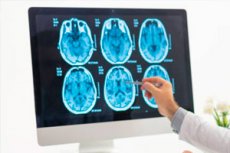
在《科学转化医学》杂志上发表的一篇题为《多模态磁共振成像揭示支持人类意识觉醒的脑干连接》的论文中,来自马萨诸塞州总医院和波士顿儿童医院的一组研究人员创建了他们认为对人类意识至关重要的大脑网络连接图。
这项研究采用了高分辨率扫描技术,使研究人员能够以亚毫米级的空间分辨率可视化大脑连接。这项技术进步使他们能够识别出之前未被注意到的连接脑干、丘脑、下丘脑、基底前脑和大脑皮层的通路。
这些通路共同构成了“默认上升激活网络”,帮助清醒的人类在静息状态下保持清醒。“默认”网络的概念基于这样的观点:大脑中的某些网络在静息状态下功能最活跃,而其他网络在执行目标导向任务时则更为活跃。
为了探究该默认脑网络的功能特性,研究人员分析了来自人类连接组计划的7特斯拉静息态功能磁共振成像数据。这些分析揭示了皮层下默认上行激活网络与介导静息状态下自我意识的皮层默认网络之间的功能联系。
互补的结构和功能连接图谱为人类意识中觉醒与知觉的整合提供了神经解剖学基础。研究人员已发表fMRI数据、脑图谱技术以及哈佛大学新版上升激活网络图谱,以支持未来绘制人类意识连接图谱的努力。
“我们的目标是绘制对意识至关重要的人类大脑网络,并为临床医生提供更好的工具来检测、预测和促进重度脑外伤患者的意识恢复,”主要作者、麻省总医院神经科学中心联合主任、麻省总医院神经技术和神经修复中心 (CNTR) 副主任、哈佛医学院神经病学副教授、麻省总医院 2023-2028 年陈氏研究员 Brian Edlow 博士解释道。
埃德洛博士解释说:“我们的连接结果表明,刺激腹侧被盖区的多巴胺能通路有可能帮助患者从昏迷中苏醒,因为这个枢纽与许多对意识至关重要的大脑区域相连。”
资深作者、波士顿儿童医院和哈佛医学院名誉教授汉娜·金尼博士补充道:“我们发现的人类大脑连接可以作为路线图,以更好地理解与意识改变相关的各种神经系统疾病,从昏迷到癫痫和婴儿猝死综合症(SIDS)。”
作者目前正在进行临床试验,刺激脑外伤后昏迷患者的默认上行激活网络,以重新激活该网络并恢复意识。

